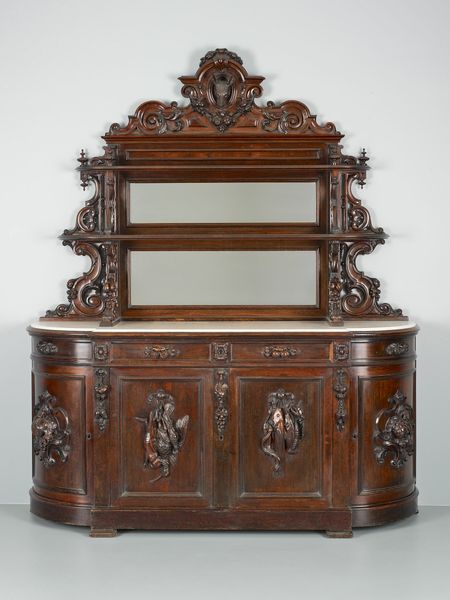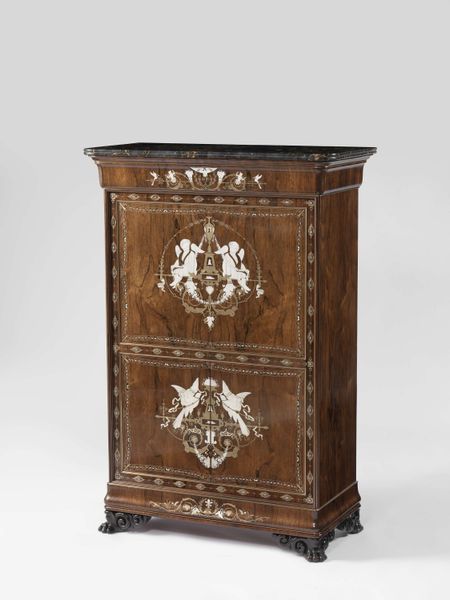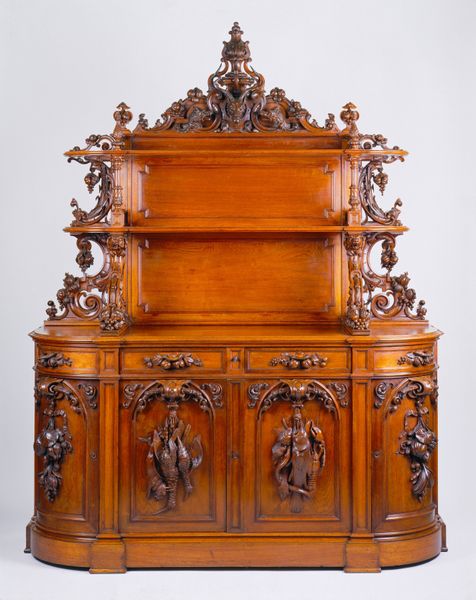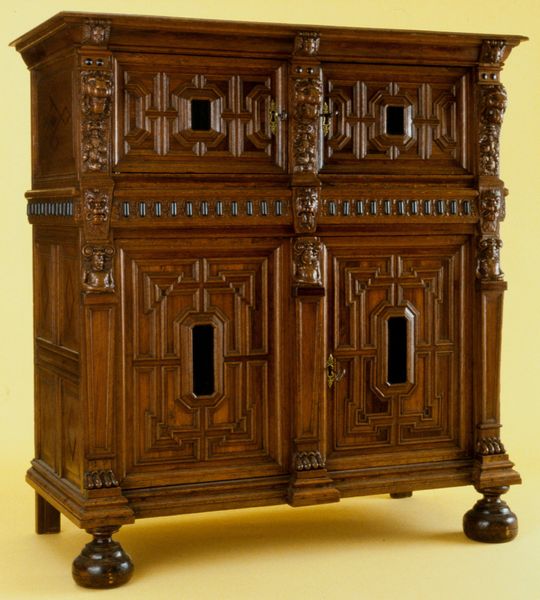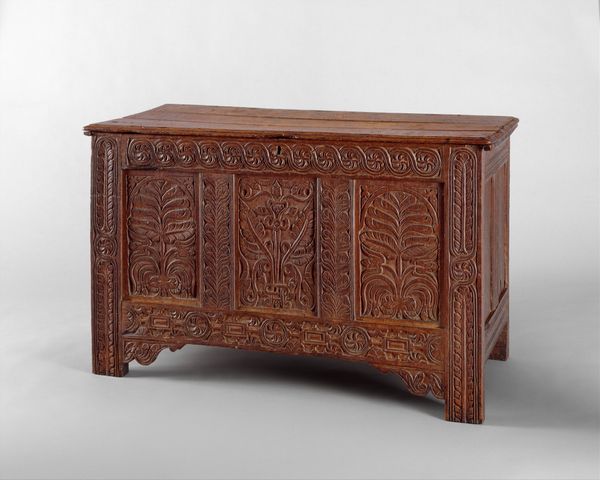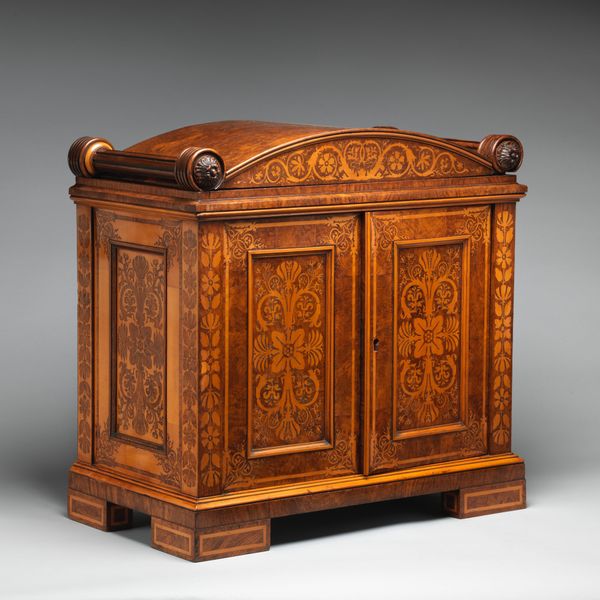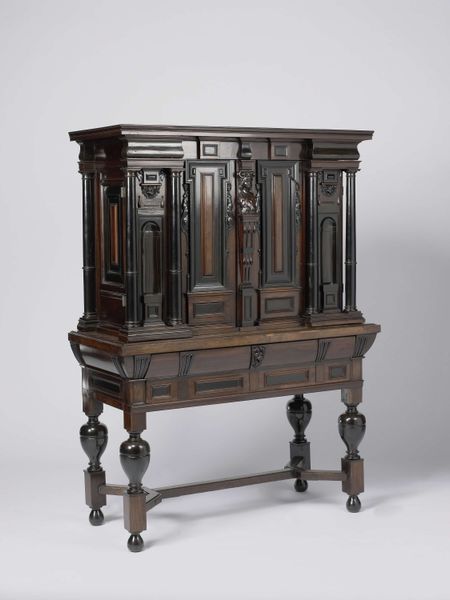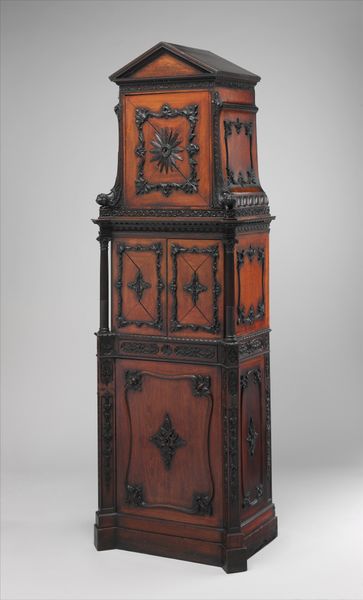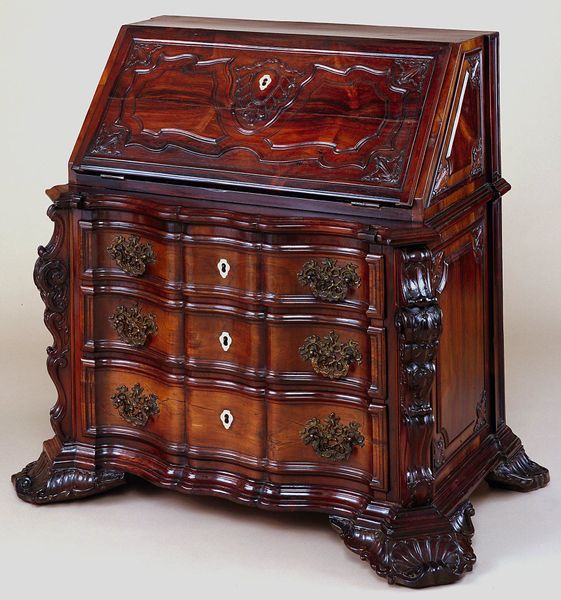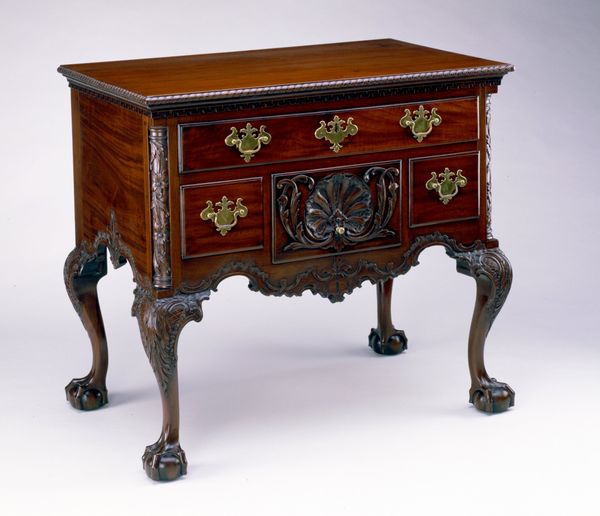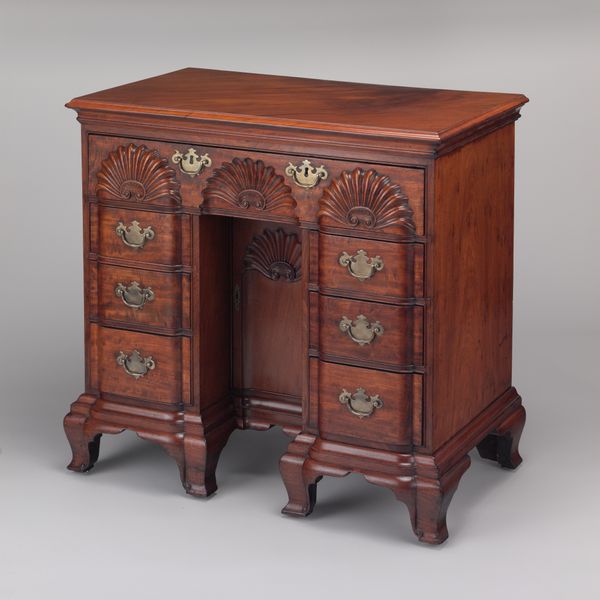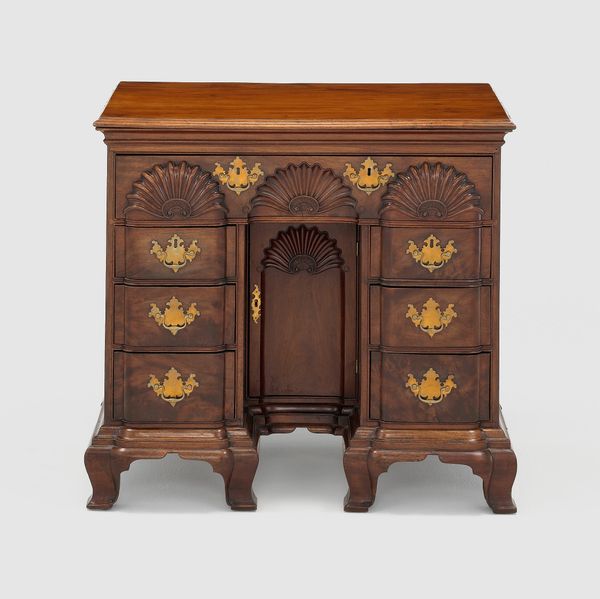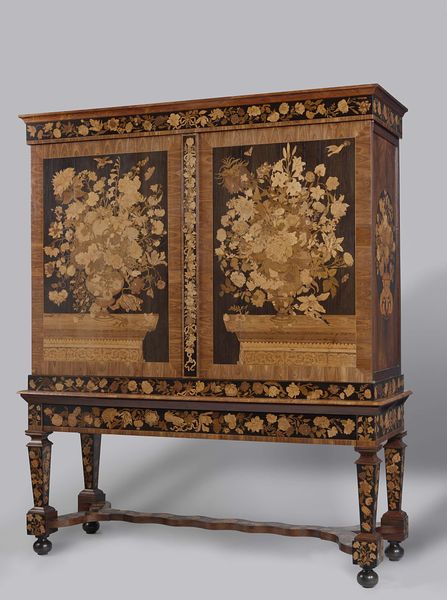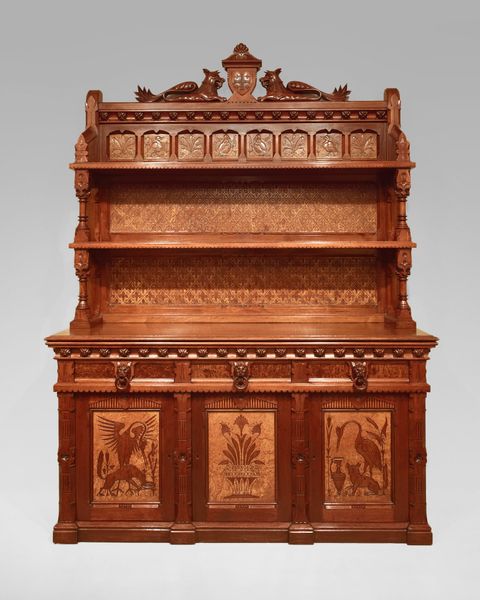
carving, sculpture, wood
#
wood texture
#
carving
#
sculpture
#
figuration
#
sculpture
#
wooden texture
#
wood
#
decorative-art
Dimensions: 58 1/2 x 38 1/2 x 22 in. (148.59 x 97.79 x 55.88 cm) (closed)
Copyright: Public Domain
Editor: This intricately carved object is a Folio stand, created around the 1870s, made out of wood. Its craftsmanship is incredible! The carvings almost feel…theatrical. What can you tell me about this piece? Curator: It’s a fantastic example of decorative art from that period. Considering its time, its existence speaks volumes about the role of arts and culture among the elite. Items like these weren’t just furniture; they were status symbols, declarations of cultivated taste. How do you think the rise of industrialization impacted the creation and the appeal of handmade objects like this? Editor: Hmm, maybe because industrialization was making things more generic, people wanted something unique to set themselves apart? It seems very elaborate to just hold books, though. Curator: Precisely! Think about who would own something like this, and where they’d display it. Aristocrats in their elaborate homes. This isn't just a folio stand, it’s about performing status through owning objects. Can you see elements within the carving that point to what social class this would appeal to? Editor: The intricacy suggests a high social class, but I'm not sure why... Is it that it’s ornate and complicated to make? It also looks almost too…fussy, I guess, to be functional for everyday use? Curator: Exactly! The opulence isn't practical, and that is very much the point. What was once functional had to say more in these upper classes. The historical significance of a piece like this is in its silent commentary on societal values. It's a snapshot of wealth and societal display. Editor: That makes so much more sense now, I hadn't considered that its purpose was also social. I will remember to ask this in the future! Curator: And that is exactly why the socio-political aspect of art gives new insights. I will definitely look at decorative arts through your fresh view from now on too.
Comments
minneapolisinstituteofart almost 2 years ago
⋮
The Florentine woodcarver and furniture maker Luigi Frullini achieved international renown for his Renaissance Revival designs through highly visible displays at World's Fairs, most notably in London (1862), Venice (1873), and Paris (1867 and 1878). This exposure led in 1875 to a commission to design and execute the dining room and furnishings for Château-sur-Mer, the family cottage of George Peabody Wetmore in Newport, Rhode Island. The carved decorations of this stand, including the grotesque masque in the center, stippled ground, ball and reel design, and surrounding guilloche border of interlacing curves, are very characteristic of Frullini's work. Additional examples by Frullini can be found in the Metropolitan Museum of Art in New York, the Philadelphia Museum of Art, the Victoria & Albert Museum in London, and the Museum für Angewandte Kunst in Vienna.
Join the conversation
Join millions of artists and users on Artera today and experience the ultimate creative platform.
